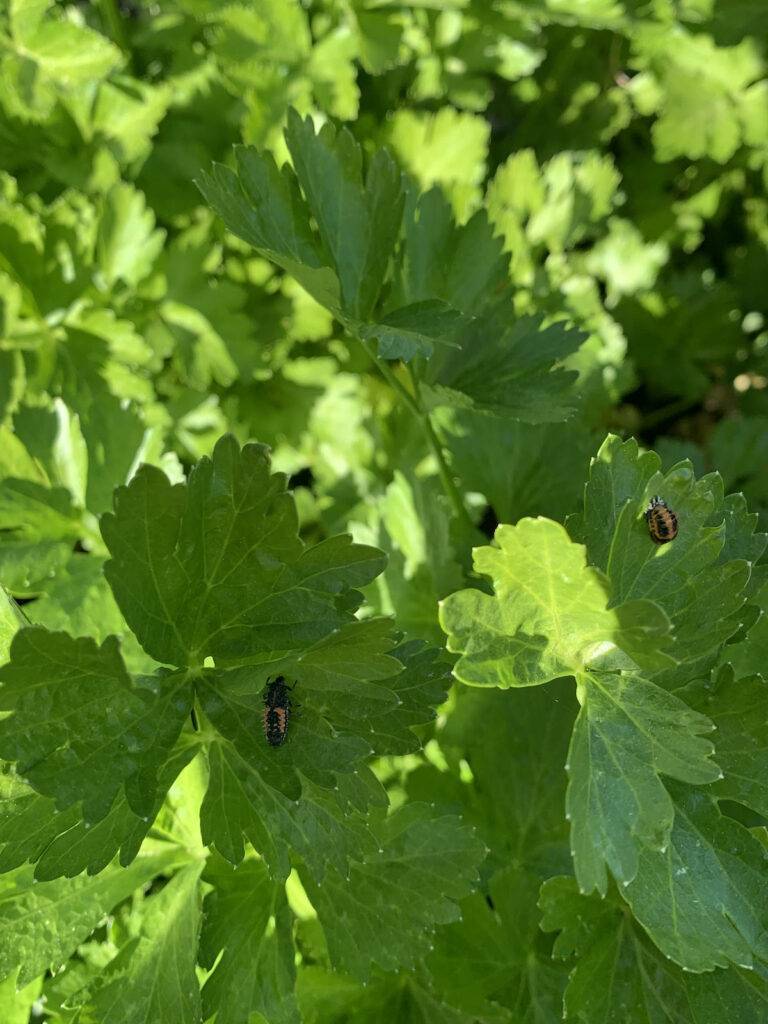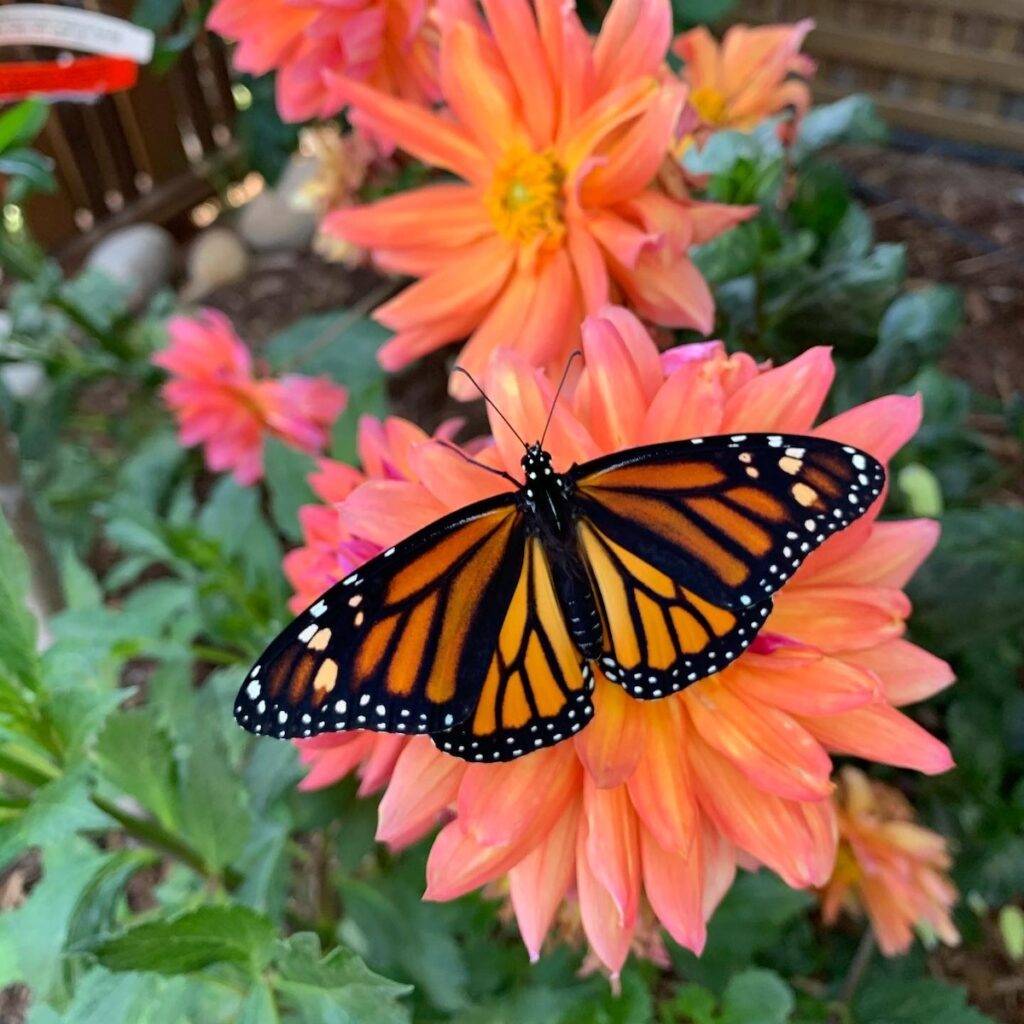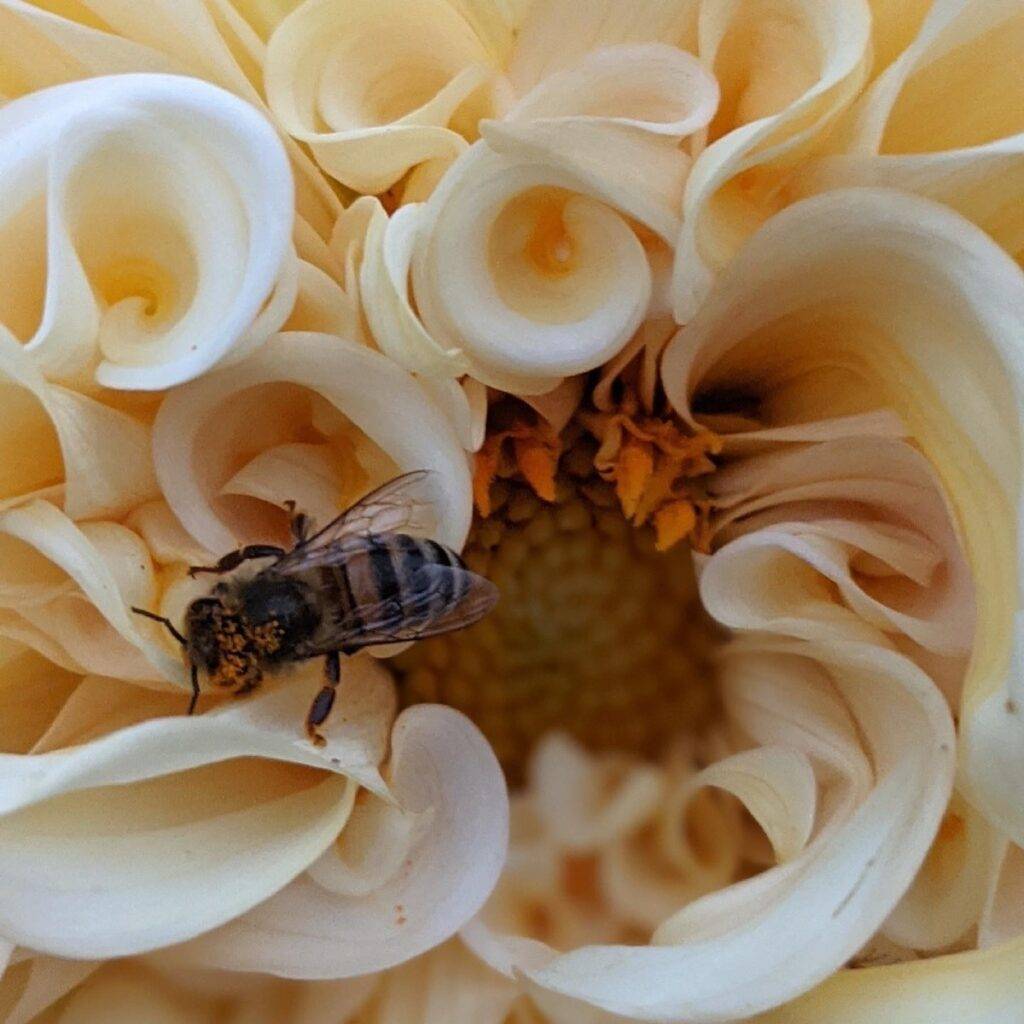What you didn’t know about ladybugs, butterflies, bees and hummingbirds, and how you can be a good global citizen by planting for them.
When Laura McLean, a San Diego therapist, started growing her urban garden, she thought everything would be clean and neat, but that’s not what happened. Despite admitting some anxiety (she goes by @thehotmessgardener on Instagram), she’s now open to what happens. “The garden is developing its own ecosystem, which is so exciting,” she says. “The more you plant species native to your region, the more you are going to attract your native pollinators and beneficial insects.” Here are her favorites:
Ladybugs

Not only do these cuties spread pollen but they feast on aphids, eating roughly 5,000 during their one-year lifespan. By planting herbs throughout her garden, Laura practices companion planting, which attracts ladybugs all over her yard and more flowers and veggies benefit from their natural bug control. You may think it’s easy to see whether you have ladybugs or not, but you may not even realize when you have young ones. The photo to the left shows them in the larval and pupa stages. “Just like butterflies, they go through metamorphosis. Within a few weeks, they will look like the ladybugs we all know and love,” says Laura, whose celery in her winter garden was covered with young native ladybugs. Laura cautions that ladybugs from a store are often not native and typically fly away and never return. “It’s best to grow a garden that promotes its own ladybug life cycle.”
Butterflies

Laura has a special love of monarchs and is contributing to their population rebound by taking caterpillars she finds in her garden and giving them a protected home in a mesh cage with milkweed plants. By providing this safe space to become butterflies, she helps more survive to adulthood, when they can drink the nectar of her flowering plants and pollinate her garden. Swallowtails are also regulars in Laura’s yard and her dill, parsley, cilantro and fennel attract the caterpillars. They, like the monarchs, also like milkweed. She always tries to buy native milkweed, since the tropical version can grow through winter. If that’s what you have, it’s important to cut it back as a signal to the butterflies to move south.
Hummingbirds
“You need all the hummingbirds possible, because they are so adorable,” Laura exclaims. She makes sure to have the tubelike flowers they enjoy and notes they have a memory for their food sources, so they return to gardens that treats them well. She also attracts them with feeders, which shouldn’t be hung by windows to reduce the chance of injury by the birds thinking they can fly through them.
Bees

The typical bees in Laura’s garden are not honeybees, but rather native solitary bees. To help these bees who don’t have hives to go home to, Laura has a bee house that’s similar to a bird house, where a bee can have their own little hole. This keeps them close to food sources in her yard, so they can keep busy with pollinating.


